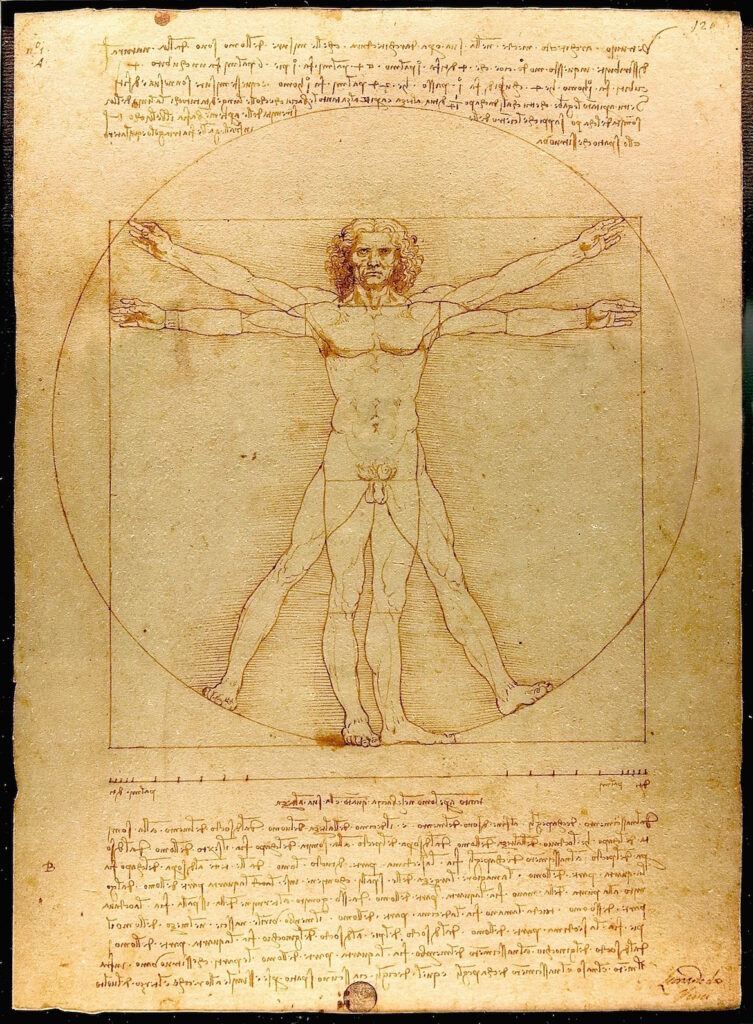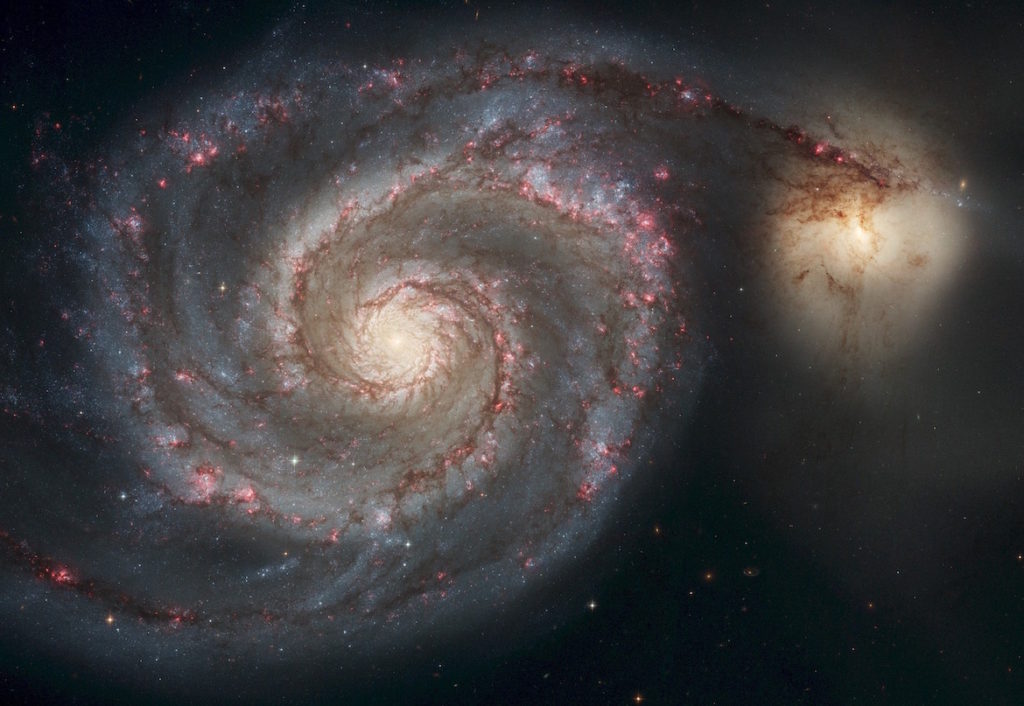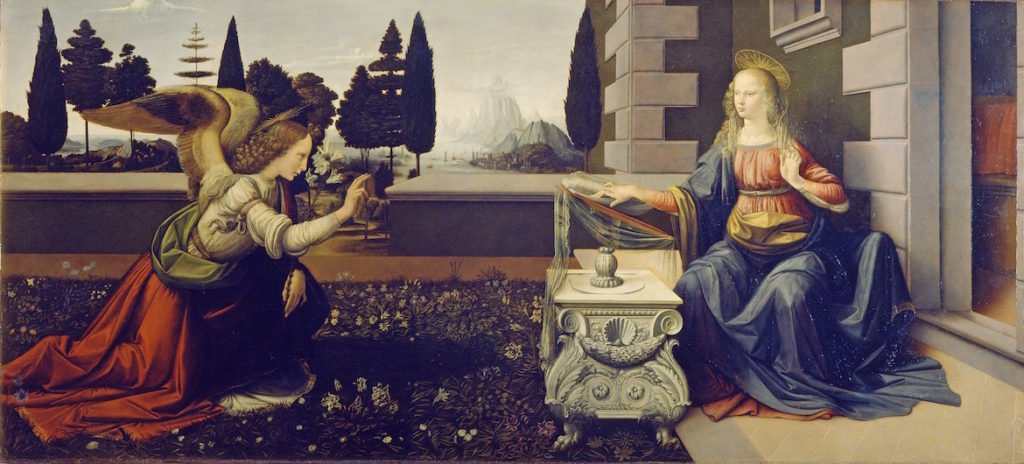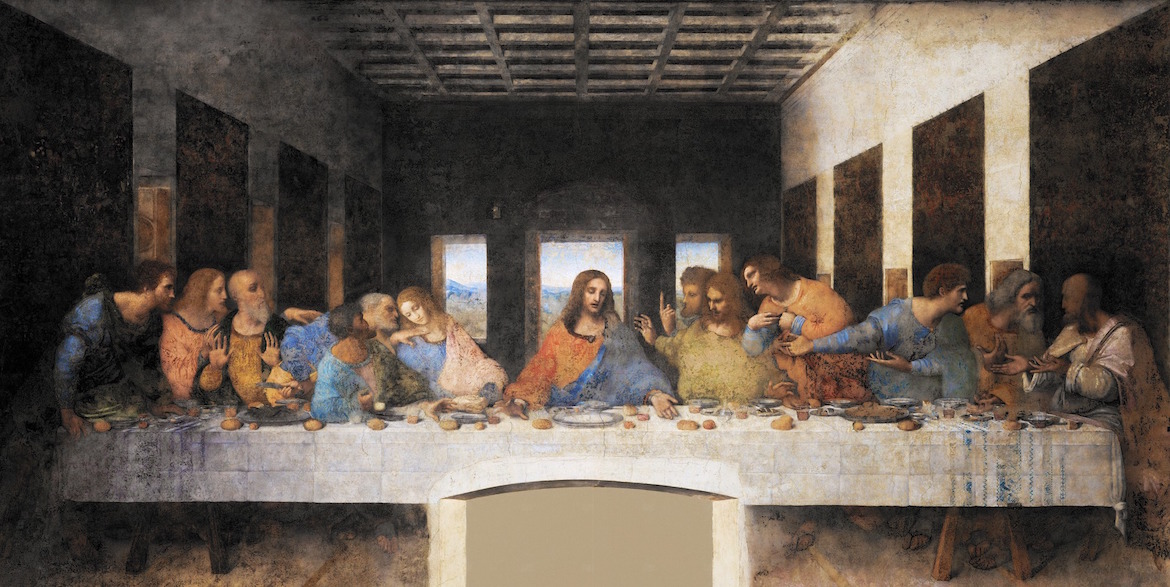The Vitruvian Man is a drawing created by Leonardo da Vinci circa 1490. It is accompanied by notes based on the work of the architect Vitruvius. The drawing, which is in pen and ink on paper, depicts a male figure in two superimposed positions with his arms and legs apart and simultaneously inscribed in a circle and square. The drawing and text are sometimes called the Canon of Proportions or, less often, Proportions of Man (Wikipedia).

Golden Ratio and Art This drawing is based on the correlations of ideal human proportions with geometry described by the ancient Roman architect Vitruvius in Book III of his treatise De Architectura. Vitruvius described the human figure as being the principal source of proportion among the Classical orders of architecture. Vitruvius determined that the ideal body should be eight heads high. Leonardo’s drawing is traditionally named in honor of the architect. (https://en.wikipedia.org/wiki/Vitruvian_Man (Wikipedia)
The human body: The measurement of the human navel to the floor and the top of the head to the navel represents the Golden ratio.
In a previous post, “The Golden Ratio In Nature“ I pointed out how this ratio appears in many forms of nature and of science.
The Golden Ratio and How it Works in Nature

In Pine cones the spiral pattern of the seed pods tend to develop in steps, upward and in opposite directions, numerically matching the Fibonacci sequence.
Sunflower seeds also follow this pattern, radiating outwards from the center to fill in spaces. And the number of Petals on some flowers, such as the rose, follows the Fibonacci sequence.
In accordance with Darwinian theory, each petal is placed to allow for the optimal exposure to sunlight.
This patterning also appears in some surprising places:
Hurricanes: Much like shells, hurricanes often display the Golden spiral.
Spiral galaxies have a number of spiral arms, with an overall shape identical to the Golden rectangle of the Fibonacci Sequence.

The Golden ratio in the animal kingdom: dolphins, starfish, sand dollars, sea urchins, ants and honeybees also exhibit the proportion.
A DNA molecule measures 34 angstroms by 21 angstroms at each full cycle of the double helix spiral. In the Fibonacci series, 34 and 21 are successive numbers.

Studies show that our sense of beauty may be innate, at least in part.

Leave a Reply
You must be logged in to post a comment.